A Survey on Challenges and Progresses in Blockchain Technologies: A Performance and Security Perspective
Abstract
1. Introduction
2. Key Technologies
2.1. Distributed Ledger
2.2. Cryptography
2.3. Consensus
2.4. Smart Contracts
2.5. Benchmarks
3. Challenges and the State of the Art Progresses
3.1. Performance Concern
3.2. Security Concern
- The goal is different. The goal of the standard cyber security is to eliminate external attackers from tampering the data. The goal of blockchain security is to make data tampering infeasible by storing data copies at as many possible locations.
- The infrastructure is different. The standard cyber system is usually centralized, and the security is achieved through the strict admission control and permission grant. The blockchain system is concentrated on decentralization, and availability and integrity is provided by the distributed nature of the ledger.
- The environment is different. The standard cyber system is controlled by the security staff and a semi-trusted (if not fully trusted) environment is assumed. Blockchain is supposed to run on untrusted distributed devices without a central authority.
3.3. Architectural Choices behind Performance and Security Concern
3.3.1. Public vs. Private/Federated
3.3.2. Byzantine vs. Non-Byzantine Consensus Fault Model
3.3.3. On-Chain vs. Off-Chain Data Storage
3.3.4. Transactional Stores vs. Non-Transactional Stores
3.3.5. SQL vs. NoSQL Data Stores
3.4. Performance Metrics
- Throughput refers to the number of successful transactions that a blockchain platform can process per second.
- Latency is the response time per transaction of the blockchain platform.
- Scalability evaluates the changes in throughput and latency when the blockchain experiences the increase of nodes and concurrent workloads.
- Fault tolerance evaluates the changes in throughput and latency during node failure including system crashes, network delays and random message corruptions.
- Security metrics are defined as the ratio between the total number of blocks of the main branch and the total number of confirmed blocks. When the ratios is high, the blockchain system is vulnerable to the security attack resulted from double spending or selfish mining.
3.5. DBMS Enhancements
3.6. Analytics on Chaincode Data
3.7. Cross Channel Transactions
3.8. Hybrid Blockchains
4. Applications
4.1. Financial Services
- Asset management: trade processing and settlementIn traditional trade process, each party keeps their own records, which is expensive and risky. After switching to blockchain, the process can be simplified by distributed ledgers and errors can be reduced by encrypting the records. Furthermore, there is no need for intermediaries. Maersk, a Danish shipping company, was reported to aid the process of shipping flowers from the Kenyan port of Mombasa to Rotterdam by using a blockchain-based approach developed with IBM, where all documents were stored in the chain and shared by all participants [57].
- Insurance: claims processingBlockchains can provide a risk-free and transparent process for insurance claims, which are usually facing fragmented and unreliable data, and processed manually. State Farm, a mutual automobile insurance company in the US, announced that it is running a blockchain based test to streamline the subrogation process for auto claims through the first half of 2019. It is hoped that the blockchain solution can help to reduce the time and resource required to complete the subrogation process compared with a regular process [58]. The work in [59] presents a prototype of blockchain based fine-grained transportation insurance. In the prototype, information of drivers and vehicle usage are collected from mobile sensors and stored on an immutable, traceable, transparent distributed ledger owned by different parties. Insurance premium are assessed based on the collected information of vehicles’ usage and drivers’ behavior, which promote fairness, encourage safer driving style and can be used by insurance companies for marketing.
- Payments: cross-border paymentsThe cross-border payment takes at least days for money to cross the world, and is very costly and easily targeted by money laundering. Blockchain-aided remittance services can help to offer secure, cheap, instant and transparent international payments. In August 2016, SBI Ripple Asia announced that Ripple’s blockchain technology will power payments and settlement for a Japanese bank consortium of 15 banks [60]. With the blockchain technology provided by Ripple, domestic and cross-border payments can be settled in real time and cross-border fees can be save up to 90%.
4.2. Internet-of-Things (IoT) Applications
- Smart appliancesA smart home appliance is a device that connects to the Internet and can help you to monitor and control the device when away from home. Encrypting these appliances on the blockchain can protect the ownership and enable transferability. Walmart has filed a patent application on the management of smart appliances using blockchain. The patent application proposes to manage a system of smart appliances such as computers, kiosks, tabletop devices, gaming devices, laptop computers, and portable media players using blockchain. It also describes a smart environment in a wide range of applications, such as home, media, manufacturing, energy, and healthcare [63]. Energy conservation measurements in buildings are measured as the difference between a predictive baseline model and the actual consumption, and the actual application involves a large amounts of data and often requires a third-party for auditing. The work in [64] develops a prototype for fair and trustable energy performance contracts, which stores the predictive models and the data in an immutable Ethereum based distributed ledger.
- Supply chain sensorsSmart sensors provide companies the timely and valuable data of the supplies as they are transported, which can power insightful analysis that promotes improvements in cost, performance, or customer experience. With blockchain, smart sensors can be more secured, and any data-tamper can be tracked and located instantly. Walmart uses blockchain to keep track of sales of pork in China. Its system records where each piece of meat comes from, each processing and storage step, and sell-by-date in the chain [65]. The work in [66] attempts to find blockchain candidates that are able to ensure the integrity of supply chain by evaluating different blockchain alternatives.
4.3. Smart Contracts Applications
- Smart GridA smart grid is an electrical grid which manages a variety of energy sources including renewable energy and energy measures. The advance of renewable energy and storage systems allows traditional energy consumers to sell excess energy back to the grid or other energy consumers within their vicinity, and hence makes the grid more distributed and in a peer-to-peer fashion. Keeping tracks of the production and distribution of electricity is an important aspects of the smart grid. Blockchain technology can provide a secure and reliable way to carry peer-to-peer energy exchanges without a central coordinator based on smart contracts. This will lead to the increase in development of decentralized micro-grids and technologies enabling micro-grids. Gai et al. proposed a permissioned blockchain edge model for smart grid network to address the privacy protections and energy security issues in smart grid, by combining blockchain and edge computing techniques [67]. They used group signatures and covert channel authorization techniques to guarantee users’ validity. There also exists a significant privacy issue in smart grid that energy trading volumes can be mined to detect its private information such as physical location and energy usage. In [68], a consortium blockchain-oriented approach is presented to solve the privacy leakage in smart grid and screen the distribution of energy sale of sellers.
- Blockchain HealthcareBlockchain can be used to store encoded personal health records and only allows granted parties to access. The distributed ledgers can also provide a secure and confidential health care management with the participation of the health care recipient, the health care provider, the insurance company, and the regulation agent. PokitDok, an e-commerce healthcare provider, introduces a blockchain based healthcare system named DokChain in 2016. DokChain integrates all endpoints in the healthcare ecosystem into the Sawtooth based blockchain network, and can provide health data for tracking and sharing in a secured way [69].
- Blockchain musicIn the online music industry, the centralized management takes profits from both artists and fans, where fans are charged huge fees for music access and artists give up much of their profits to the centralized management. The blockchain and smart contracts technology can help to create a distributed music streaming platform, where all transactions are transparent, the money go directly to the artists, and fans can access to more music in simpler and cheaper ways. There are many blockchain based music companies emerging worldly wide [70], spreading from the west coast of Europe to the east coast of China, and to the Americas. Ma et al. proposed a master–slave blockchain platform that is applicable in digital rights management [71].
4.4. Performance and Security Challenges Faced by Incorporating Blockchain in Industry
5. Futuristic Topics
5.1. Summary of Performance Limitations and Possible Directions
- ThroughputThe current throughput of commercial blockchain platforms is several magnitudes lower than the traditional database systems. With the expectation to apply blockchain to process business transactions in real production environment, the throughput of the blockchain network needs to be improved.
- LatencyCurrently, it takes dozens of minutes to complete a transaction in blockchain platforms, while a transaction only takes a few seconds in VISA. Thus, improving the processing latency to several minutes, while still maintaining security is a major challenge.
- Network bottleneckSince each node in blockchain network needs to keep a copy of data, the data exchanged in network makes the network bandwidth a bottleneck. As the size of a blockchain system increases, the network bandwidth bottleneck has to be solved.
5.1.1. Parallelism Exploitation
5.1.2. Performance Benchmark and Evaluation for Verification
5.2. Summary of Security Limitations and Possible Directions
5.3. More Blockchain Based Business Models Are Expected
6. Conclusions
Author Contributions
Funding
Conflicts of Interest
References
- Nakamoto, S. Bitcoin: A Peer-to-Peer Electronic Cash System. Available online: https://bitcoin.org/en/bitcoin-paper (accessed on 3 November 2019).
- Keenan, T.P. Alice in Blockchains: Surprising Security Pitfalls in PoW and PoS Blockchain Systems. In Proceedings of the 2017 15th Annual Conference on Privacy, Security and Trust (PST), Calgary, AB, Canada, 28–30 August 2017; pp. 400–4002. [Google Scholar] [CrossRef]
- Kareem, A.; Sulaiman, R.B.; Farooq, M.U. Algorithms and Security Concern in Blockchain Technology: A Brief Review. 2018. Available online: https://papers.ssrn.com/sol3/papers.cfm?abstract_id=3234933 (accessed on 3 November 2019).
- Henry, R.; Herzberg, A.; Kate, A. Blockchain Access Privacy: Challenges and Directions. IEEE Secur. Priv. 2018, 16, 38–45. [Google Scholar] [CrossRef]
- Mohan, C. Blockchains and Databases: A New Era in Distributed Computing. In Proceedings of the 2018 IEEE 34th International Conference on Data Engineering (ICDE), Paris, France, 16–19 April 2018; pp. 1739–1740. [Google Scholar] [CrossRef]
- Yu, Z.; Liu, X.; Wang, G. A Survey of Consensus and Incentive Mechanism in Blockchain Derived from P2P. In Proceedings of the 2018 IEEE 24th International Conference on Parallel and Distributed Systems (ICPADS), Singapore, 11–13 December 2018; pp. 1010–1015. [Google Scholar] [CrossRef]
- Cachin, C.; Vukolic, M. Blockchain Consensus Protocols in the Wild. arXiv 2017, arXiv:1707.01873. [Google Scholar]
- Wang, S.; Ouyang, L.; Yuan, Y.; Ni, X.; Han, X.; Wang, F. Blockchain-Enabled Smart Contracts: Architecture, Applications, and Future Trends. IEEE Trans. Syst. Man Cybern. Syst. 2019, 49, 2266–2277. [Google Scholar] [CrossRef]
- Roy, S.; Ashaduzzaman, M.; Hassan, M.; Chowdhury, A.R. BlockChain for IoT Security and Management: Current Prospects, Challenges and Future Directions. In Proceedings of the 2018 5th International Conference on Networking, Systems and Security (NSysS), Dhaka, Bangladesh, 18–20 December 2018; pp. 1–9. [Google Scholar] [CrossRef]
- Al-Jaroodi, J.; Mohamed, N. Blockchain in Industries: A Survey. IEEE Access 2019, 7, 36500–36515. [Google Scholar] [CrossRef]
- Alkurdi, F.; Elgendi, I.; Munasinghe, K.S.; Sharma, D.; Jamalipour, A. Blockchain in IoT Security: A Survey. In Proceedings of the 2018 28th International Telecommunication Networks and Applications Conference (ITNAC), Sydney, NSW, Australia, 21–23 November 2018; pp. 1–4. [Google Scholar] [CrossRef]
- Conti, M.; Sandeep Kumar, E.; Lal, C.; Ruj, S. A Survey on Security and Privacy Issues of Bitcoin. IEEE Commun. Surv. Tutor. 2018, 20, 3416–3452. [Google Scholar] [CrossRef]
- Atzei, N.; Bartoletti, M.; Cimoli, T. A Survey of Attacks on Ethereum Smart Contracts (SoK). In Proceedings of the International Conference on Principles of Security and Trust, Uppsala, Sweden, 22–29 April 2017; pp. 164–186. [Google Scholar] [CrossRef]
- Yli-Huumo, J.; Ko, D.; Choi, S.; Park, S.; Smolander, K. Where Is Current Research on Blockchain Technology? A Systematic Review. PLoS ONE 2016, 11, e0163477. [Google Scholar] [CrossRef] [PubMed]
- Ethereum Blockchain APP Platform. Available online: https://www.ethereum.org/ (accessed on 3 November 2019).
- The Bitshares Blockchain. 2018. Available online: https://github.com/bitshares-foundation/bitshares.foundation/blob/master/download/articles/BitSharesBlockchain.pdf (accessed on 3 November 2019).
- Morgan, J. A Permissioned Implementation of Ethereum Supporting Data Privacy. 2016. Available online: https://www.goquorum.com/ (accessed on 3 November 2019).
- Hyperledger Architecture, Volume 1. Available online: https://www.hyperledger.org/wp-content/uploads/2017/08/HyperLedger_Arch_WG_Paper_1_Consensus.pdf (accessed on 3 November 2019).
- Androulaki, E.; Barger, A.; Bortnikov, V.; Cachin, C.; Christidis, K.; De Caro, A.; Enyeart, D.; Ferris, C.; Laventman, G.; Manevich, Y.; et al. Hyperledger Fabric: A Distributed Operating System for Permissioned Blockchains. In Proceedings of the Thirteenth EuroSys Conference, EuroSys ’18, Porto, Portugal, 23–26 April 2018; ACM: New York, NY, USA, 2018; pp. 30:1–30:15. [Google Scholar] [CrossRef]
- Buchman, E. Tendermint: Byzantine Fault Tolerance in the Age of Blockchains. Master’s Thesis, University of Guelph, Guelph, ON, Canada, 2003. [Google Scholar]
- Symbiont Assembly. Available online: https://symbiont.io/ (accessed on 3 November 2019).
- Hearn, M. Corda: A Distributed Ledger. 2016. Available online: https://docs.corda.net/_static/corda-technical-whitepaper.pdf (accessed on 3 November 2019).
- Hyperledger Iroha. Available online: https://www.hyperledger.org/projects/iroha (accessed on 3 November 2019).
- Martino, W. Kadena: The First Scalable, High Performance Private Blockchain. 2016. Available online: https://kadena.io/wp-content/uploads/2018/08/Kadena-ConsensusWhitePaper-Aug2016.pdf (accessed on 3 November 2019).
- Hyperledger Sawtooth. Available online: https://www.hyperledger.org/projects/sawtooth (accessed on 3 November 2019).
- Armknecht, F.; Karame, G.O.; Mandal, A.; Youssef, F.; Zenner, E. Ripple: Overview and Outlook. In Trust and Trustworthy Computing; Conti, M., Schunter, M., Askoxylakis, I., Eds.; Springer International Publishing: Cham, Germany, 2015; pp. 163–180. [Google Scholar]
- Mazieres, D. The Stellar Consensus Protocol: A Federated Model for Internet-level Consensus. Available online: https://www.stellar.org/papers/stellar-consensus-protocol.pdf (accessed on 3 November 2019).
- Popov, S. The Tangle. 2016. Available online: https://iota.org/IOTA_Whitepaper.pdf (accessed on 3 November 2019).
- Rouhani, S.; Deters, R. Security, Performance, and Applications of Smart Contracts: A Systematic Survey. IEEE Access 2019, 7, 50759–50779. [Google Scholar] [CrossRef]
- Performance, H.; Group, S.W. Hyperledger Blockchain Performance Metrics White Paper. 2018. Available online: https://www.hyperledger.org/resources/publications/blockchain-performance-metrics (accessed on 3 November 2019).
- Measuring Blockchain Performance with Hyperledger Caliper. 2018. Available online: https://www.hyperledger.org/blog/2018/03/19/measuring-blockchain-performance-with-hyperledger-caliper (accessed on 3 November 2019).
- Dinh, T.T.A.; Wang, J.; Chen, G.; Liu, R.; Ooi, B.C.; Tan, K.L. BLOCKBENCH: A Framework for Analyzing Private Blockchains. In Proceedings of the 2017 ACM International Conference on Management of Data (SIGMOD ’17), Chicago, IL, USA, 14–19 May 2017; ACM: New York, NY, USA, 2017; pp. 1085–1100. [Google Scholar] [CrossRef]
- Parity: Blockchain Infrastructure for the Decentralised Web. Available online: https://www.parity.io/ (accessed on 3 November 2019).
- Bitcoin and Ethereum vs. Visa and PayPal—Transactions per Second. 2017. Available online: https://bitcoinmine.co.za/bitcoin-and-ethereum-vs-visa-and-paypal-transactions-per-second/ (accessed on 3 November 2019).
- Sukhwani, H.; Martínez, J.M.; Chang, X.; Trivedi, K.S.; Rindos, A. Performance Modeling of PBFT Consensus Process for Permissioned Blockchain Network (Hyperledger Fabric). In Proceedings of the 2017 IEEE 36th Symposium on Reliable Distributed Systems (SRDS), Hong Kong, China, 26–29 September 2017; pp. 253–255. [Google Scholar] [CrossRef]
- Yu, Y.; Liang, R.; Xu, J. A Scalable and Extensible Blockchain Architecture. In Proceedings of the 2018 IEEE International Conference on Data Mining Workshops (ICDMW), Singapore, 17–20 November 2018; pp. 161–163. [Google Scholar] [CrossRef]
- Sanka, A.I.; Cheung, R.C.C. Efficient High Performance FPGA based NoSQL Caching System for Blockchain Scalability and Throughput Improvement. In Proceedings of the 2018 26th International Conference on Systems Engineering (ICSEng), Sydney, Australia, 18–20 December 2018; pp. 1–8. [Google Scholar] [CrossRef]
- Qi, Z.; Zhang, Y.; Wang, Y.; Wang, J.; Wu, Y. A Cascade Structure for Blockchain. In Proceedings of the 2018 1st IEEE International Conference on Hot Information-Centric Networking (HotICN), Shenzhen, China, 15–17 August 2018; pp. 252–253. [Google Scholar] [CrossRef]
- Eyal, I.; Gencer, A.E.; Sirer, E.G.; van Renesse, R. Bitcoin-NG: A Scalable Blockchain Protocol. In Proceedings of the 13th USENIX Symposium on Networked Systems Design and Implementation (NSDI ’16), Santa Clara, CA, USA, 16–18 March 2016; pp. 45–59. [Google Scholar]
- Kan, J.; Chen, S.; Huang, X. Improve Blockchain Performance using Graph Data Structure and Parallel Mining. In Proceedings of the 2018 1st IEEE International Conference on Hot Information-Centric Networking (HotICN), Shenzhen, China, 15–17 August 2018; pp. 173–178. [Google Scholar] [CrossRef]
- Li, K.; Li, H.; Hou, H.; Li, K.; Chen, Y. Proof of Vote: A High-Performance Consensus Protocol Based on Vote Mechanism amp; Consortium Blockchain. In Proceedings of the 2017 IEEE 19th International Conference on High Performance Computing and Communications; IEEE 15th International Conference on Smart City; IEEE 3rd International Conference on Data Science and Systems (HPCC/SmartCity/DSS), Bangkok, Thailand, 18–20 December 2017; pp. 466–473. [Google Scholar] [CrossRef]
- QA: Does Blockchain Alleviate Security Concerns or Create New Challenges? 2017. Available online: https://www.hyperledger.org/blog/2017/10/17/qa-does-blockchain-alleviate-security-concerns-or-create-new-challenges (accessed on 3 November 2019).
- Matsuo, S. How Formal Analysis and Verification Add Security to Blockchain-based Systems. In Proceedings of the 2017 Formal Methods in Computer Aided Design (FMCAD), Vienna, Austria, 2–6 October 2017; pp. 1–4. [Google Scholar] [CrossRef]
- Garay, J.A.; Kiayias, A.; Leonardosy, N. The Bitcoin Backbone Protocol: Analysis and Applications. 2017. Available online: https://eprint.iacr.org/2014/765.pdf (accessed on 3 November 2019).
- Lei, K.; Zhang, Q.; Xu, L.; Qi, Z. Reputation-Based Byzantine Fault-Tolerance for Consortium Blockchain. In Proceedings of the 2018 IEEE 24th International Conference on Parallel and Distributed Systems (ICPADS), Singapore, 11–13 December 2018; pp. 604–611. [Google Scholar] [CrossRef]
- Dinh, T.T.A.; Liu, R.; Zhang, M.; Chen, G.; Ooi, B.C.; Wang, J. Untangling Blockchain: A Data Processing View of Blockchain Systems. IEEE Trans. Knowl. Data Eng. 2018, 30, 1366–1385. [Google Scholar] [CrossRef]
- Thakkar, P.; Nathan, S.; Viswanathan, B. Performance Benchmarking and Optimizing Hyperledger Fabric Blockchain Platform. In Proceedings of the 2018 IEEE 26th International Symposium on Modeling, Analysis, and Simulation of Computer and Telecommunication Systems (MASCOTS), Milwaukee, WI, USA, 25–28 September 2018. [Google Scholar]
- BigchainDB 2.0 The Blockchain Database. 2018. Available online: https://www.bigchaindb.com/whitepaper/bigchaindb-whitepaper.pdf (accessed on 3 November 2019).
- Brown, R.G.; Carlyle, J.; Grigg, I.; Hearn, M. Corda: An Introduction. 2016. Available online: https://docs.corda.net/_static/corda-introductory-whitepaper.pdf (accessed on 3 November 2019).
- Zhu, Y.; Zhang, Z.; Jin, C.; Zhou, A.; Yan, Y. SEBDB: Semantics Empowered BlockChain DataBase. In Proceedings of the 35th IEEE International Conference on Data Engineering (ICDE 2019), Macao, China, 8–11 April 2019. [Google Scholar]
- Gupta, H.; Hans, S.; Aggarwal, K.; Mehta, S.; Chatterjee, B.; Jayachandran, P. Efficiently Processing Temporal Queries on Hyperledger Fabric. In Proceedings of the 2018 IEEE 34th International Conference on Data Engineering (ICDE), Paris, France, 16–19 April 2018; pp. 1489–1494. [Google Scholar] [CrossRef]
- Gupta, H.; Hans, S.; Mehta, S.; Jayachandran, P. On Building Efficient Temporal Indexes on Hyperledger Fabric. In Proceedings of the 2018 IEEE 11th International Conference on Cloud Computing (CLOUD), San Francisco, CA, USA, 2–7 July 2018; pp. 294–301. [Google Scholar] [CrossRef]
- Lightning Network: Scalable, Instant Bitcoin/Blockchain Transactions. Available online: https://lightning.network/ (accessed on 3 November 2019).
- The Lightning Network and Atomic Swaps. 2018. Available online: https://www.bitcoinlightning.com/how-the-lightning-network-will-change-the-way-we-exchange-crypto/ (accessed on 3 November 2019).
- English, S.M.; Orlandi, F.; Auer, S. Disintermediation of Inter-Blockchain Transactions. arXiv 2016, arXiv:1609.02598. [Google Scholar]
- Announcement by the Cyberspace Administration of China on the Issuance of the First Batch of Domestic Blockchain Information Service (in Chinese). 2019. Available online: http://www.cac.gov.cn/2019-03/30/c_1124305122.htm (accessed on 3 November 2019).
- Green, A. Will Blockchain Accelerate Trade Flows? 2017. Available online: https://www.ft.com/content/a36399fa-a927-11e7-ab66-21cc87a2edde (accessed on 3 November 2019).
- State Farm Tests Blockchain Insurance Claim Platform. 2018. Available online: https://www.pymnts.com/blockchain/2018/state-farm-insurance-claims-subrogation/ (accessed on 3 November 2019).
- Li, Z.; Xiao, Z.; Xu, Q.; Sotthiwat, E.; Mong Goh, R.S.; Liang, X. Blockchain and IoT Data Analytics for Fine-Grained Transportation Insurance. In Proceedings of the 2018 IEEE 24th International Conference on Parallel and Distributed Systems (ICPADS), Singapore, 11–13 December 2018; pp. 1022–1027. [Google Scholar] [CrossRef]
- Peyton, A. Ripple Blockchain Powers Payments for Japanese Bank Consortium. 2016. Available online: http://www.bankingtech.com/558852/ripple-blockchain-powers-payments-for-japanese-bank-consortium/ (accessed on 3 November 2019).
- Yu, S.; Lv, K.; Shao, Z.; Guo, Y.; Zou, J.; Zhang, B. A High Performance Blockchain Platform for Intelligent Devices. In Proceedings of the 2018 1st IEEE International Conference on Hot Information-Centric Networking (HotICN), Shenzhen, China, 15–17 August 2018; pp. 260–261. [Google Scholar]
- Wang, Z.; Dong, X.; Li, Y.; Fang, L.; Chen, P. IoT Security Model and Performance Evaluation: A Blockchain Approach. In Proceedings of the 2018 International Conference on Network Infrastructure and Digital Content (IC-NIDC), Guiyang, China, 22–24 August 2018; pp. 260–264. [Google Scholar] [CrossRef]
- Maloney, C. Walmart Files Blockchain Patent for Smart Appliance Management. 2018. Available online: https://www.ccn.com/walmart-files-blockchain-patent-for-smart-appliances (accessed on 3 November 2019).
- Gürcan, Ö.; Agenis-Nevers, M.; Batany, Y.; Elmtiri, M.; Le Fevre, F.; Tucci-Piergiovanni, S. An Industrial Prototype of Trusted Energy Performance Contracts Using Blockchain Technologies. In Proceedings of the 2018 IEEE 20th International Conference on High Performance Computing and Communications; IEEE 16th International Conference on Smart City; IEEE 4th International Conference on Data Science and Systems (HPCC/SmartCity/DSS), Exeter, UK, 28–30 June 2018; pp. 1336–1343. [Google Scholar] [CrossRef]
- Marr, B. How Blockchain will Transform the Supply Chain and Logistics Industry. 2018. Available online: https://www.forbes.com/sites/bernardmarr/2018/03/23/how-blockchain-will-transform-the-supply-chain-and-logistics-industry/#5bd085a75fec (accessed on 3 November 2019).
- Kuhi, K.; Kaare, K.; Koppel, O. Ensuring Performance Measurement Integrity in Logistics Using Blockchain. In Proceedings of the 2018 IEEE International Conference on Service Operations and Logistics, and Informatics (SOLI), Singapore, 31 July–2 August 2018; pp. 256–261. [Google Scholar] [CrossRef]
- Gai, K.; Wu, Y.; Zhu, L.; Xu, L.; Zhang, Y. Permissioned Blockchain and Edge Computing Empowered Privacy-preserving Smart Grid Networks. IEEE Internet Things J. 2019, 6, 7992–8004. [Google Scholar] [CrossRef]
- Gai, K.; Wu, Y.; Zhu, L.; Qiu, M.; Shen, M. Privacy-Preserving Energy Trading Using Consortium Blockchain in Smart Grid. IEEE Trans. Indust. Inform. 2019, 15, 3548–3558. [Google Scholar] [CrossRef]
- DokChain by PokitDok—Blockchain for Healthcare. 2017. Available online: https://blockchainhealthcarereview.com/dokchain-by-pokitdoc-blockchain-for-healthcare/ (accessed on 3 November 2019).
- Daley, S. 17 Blockchain Music Companies Reshaping a Troubled Industry. 2019. Available online: https://builtin.com/blockchain/blockchain-music-Innovation-examples (accessed on 3 November 2019).
- Ma, Z.; Huang, W.; Bi, W.; Gao, H.; Wang, Z. A Master-slave Blockchain Paradigm and Application in Digital Rights Management. China Commun. 2018, 15, 174–188. [Google Scholar] [CrossRef]
- Samaniego, M.; Deters, R. Blockchain as a Service for IoT. In Proceedings of the 2016 IEEE International Conference on Internet of Things (iThings) and IEEE Green Computing and Communications (GreenCom) and IEEE Cyber, Physical and Social Computing (CPSCom) and IEEE Smart Data (SmartData), Chengdu, China, 15–18 December 2016; pp. 433–436. [Google Scholar] [CrossRef]
- Ælf–A Multi-Chain Parallel Computing Blockchain Framework. 2017. Available online: https://crushcrypto.com/wp-content/uploads/2018/01/ELF-Whitepaper.pdf (accessed on 3 November 2019).
- Van Toan, N.; Park, U.; Ryu, G. RCANE: Semi-Centralized Network of Parallel Blockchain and APoS. In Proceedings of the 2018 IEEE 24th International Conference on Parallel and Distributed Systems (ICPADS), Singapore, 11–13 December 2018; pp. 1–6. [Google Scholar] [CrossRef]
- Fitzi, M.; Aggelos Kiayias, P.G.; Russelly, A. Parallel Chains: Improving Throughput and Latency of Blockchain Protocols via Parallel Composition. 2018. Available online: https://eprint.iacr.org/2018/1119.pdf (accessed on 3 November 2019).
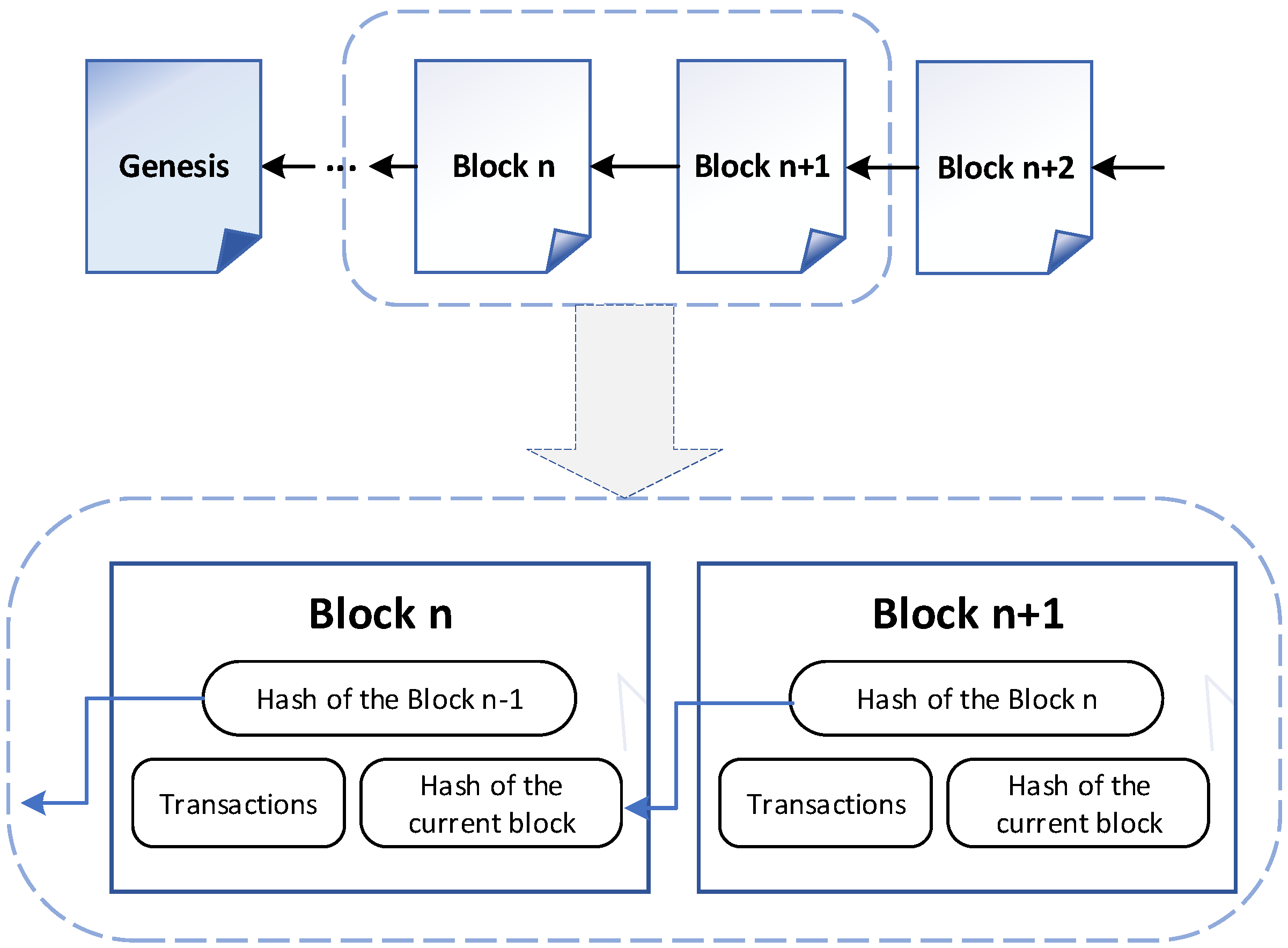
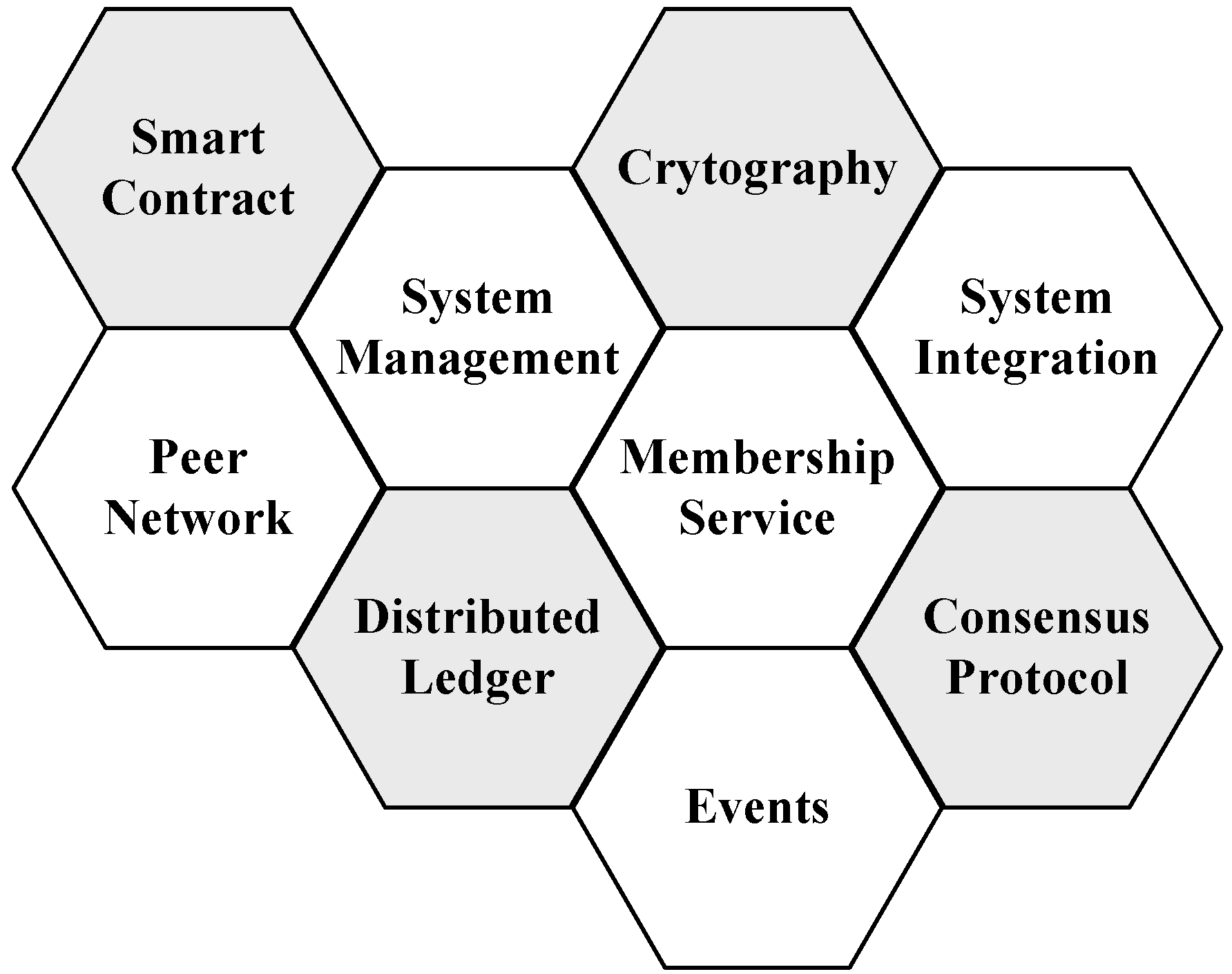
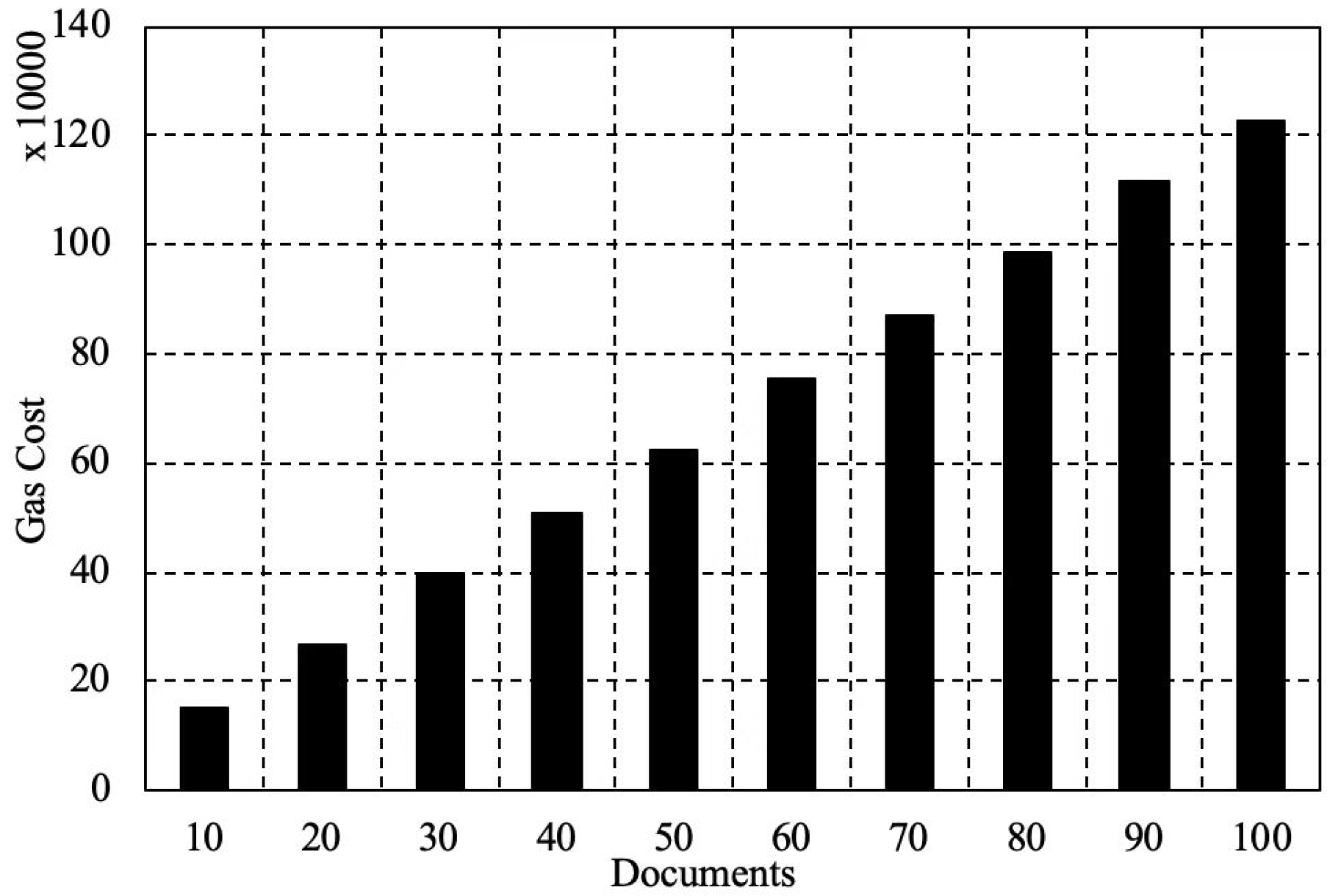
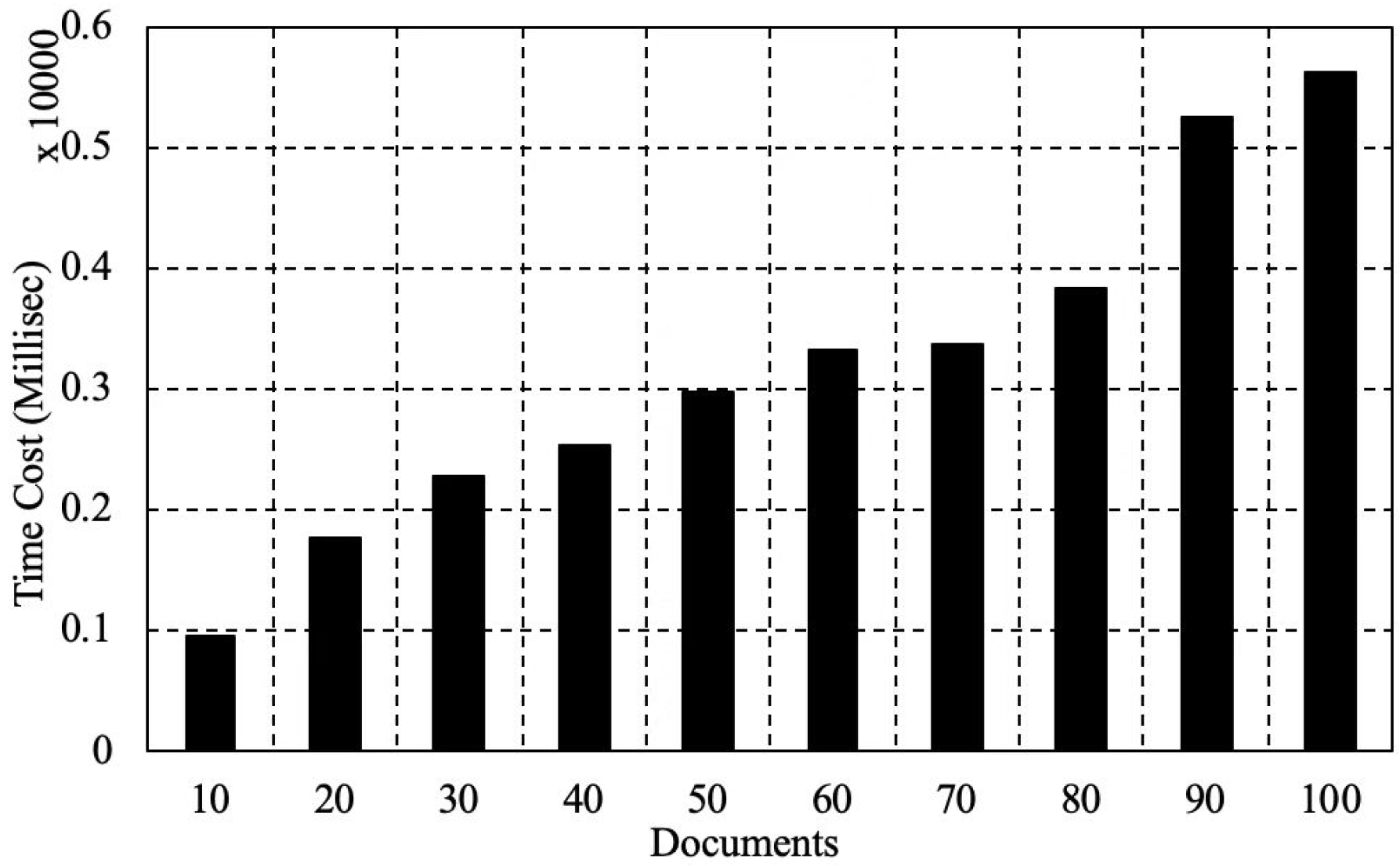
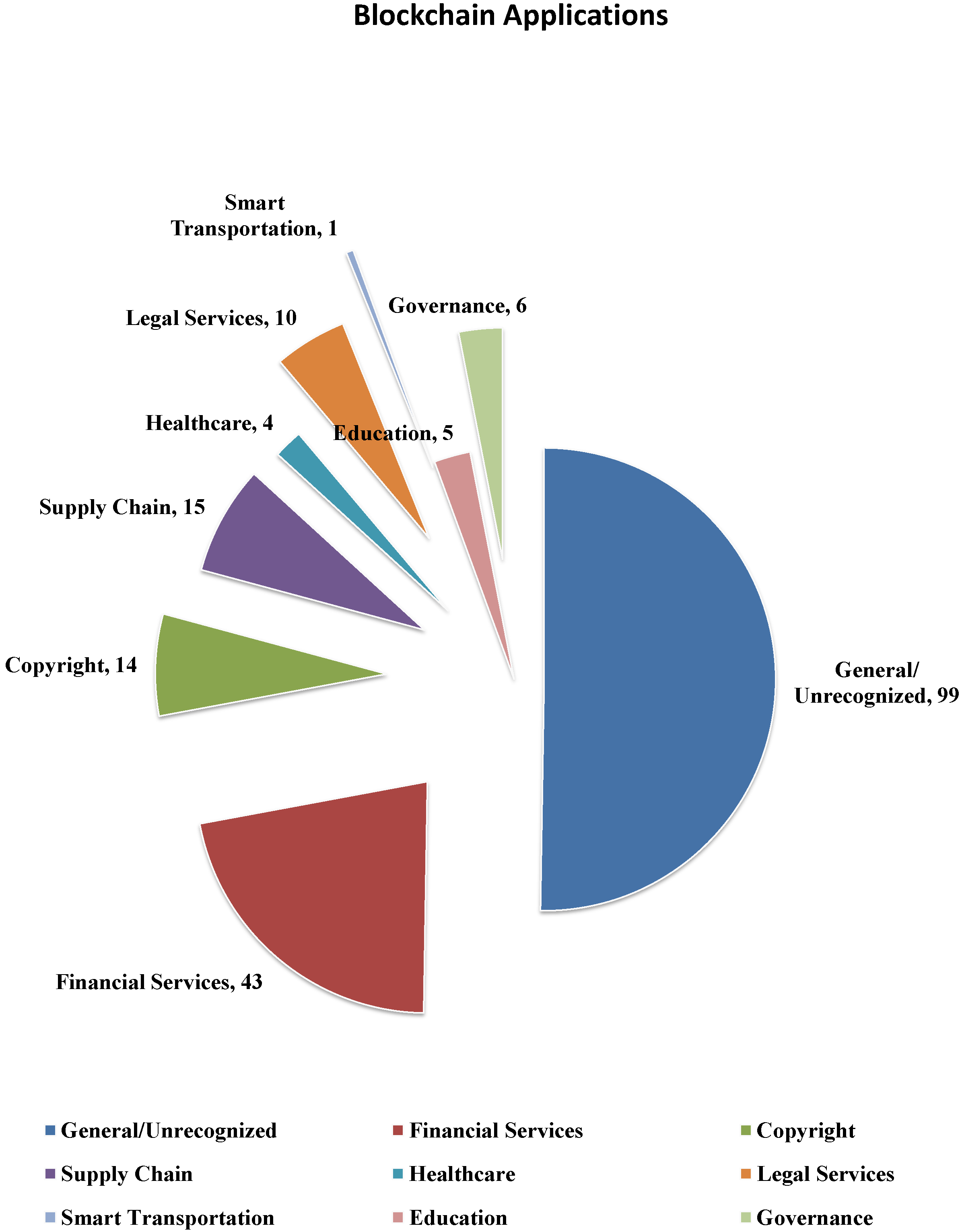
| Features | PoW | PoS | DPoS | Raft | pBFT |
|---|---|---|---|---|---|
| BFT | 50% | 50% | 50% | N/A | 33% |
| CFT | 50% | 50% | 50% | 50% | 33% |
| verification speed | >100 s | <100 s | <100 s | <10 s | <10 s |
| tps | <100 | <1000 | <1000 | >10 k | <2000 |
| scalability | strong | strong | strong | weak | weak |
| typical platforms | Bitcoin | Ethereum [15] | BitShares [16] | Quorum [17] | Hyperledger Fabric [18] |
| Public Blockchain | DBMS | |
|---|---|---|
| Application | reliable data management between entities | efficient data management inside one entity |
| Consensus | Byzantine fault tolerance | crash fault tolerance |
| Centralized | decentralized | strong centralized |
| Network | P2P in a malicious environment | master-slave in a trusted enviroment |
| Admission Control | none | user and role management |
| Storage | immutable chain-based transactions | transaction logs |
| Data structure | Merkle tree | B tree |
| Administrator | none | super user |
| Public | Private/Federated | |
|---|---|---|
| Access | open read/write | permissioned read/write |
| Speed | slow | fast |
| Security | PoW, PoS, other consensus protocols | PBFT, Raft, legal contracts, proof of authority |
| Membership | anonymous/ pseudonymous | known identity |
| Environment | untrusted | trusted |
| Typical platforms | BitCoin, Ethereum | Hyperledger |
| Metrics | Ethereum | Parity |
|---|---|---|
| Throughput | hundreds of tps | tens of tps (no more than 80 tps) |
| Latency | around 100 seconds | several seconds |
| Scalability | degrade linearly | keep constant |
| Fault tolerance | unaffected | unaffected |
| Security | vulnerable | vulnerable |
| Hyperledger | IOTA | |
| Throughput | thousands of tps | 127 tps on a 250-node network |
| Latency | tens of seconds | approach zero when the network reaches a certain size |
| Scalability | can not scale up to 16 nodes | scalability increases with more users |
| Fault tolerance | stop working after nodes fail | asynchronous BFT and works with more than honest nodes |
| Security | guaranteed safety | vulnerable |
© 2019 by the authors. Licensee MDPI, Basel, Switzerland. This article is an open access article distributed under the terms and conditions of the Creative Commons Attribution (CC BY) license (http://creativecommons.org/licenses/by/4.0/).
Share and Cite
Zheng, X.; Zhu, Y.; Si, X. A Survey on Challenges and Progresses in Blockchain Technologies: A Performance and Security Perspective. Appl. Sci. 2019, 9, 4731. https://doi.org/10.3390/app9224731
Zheng X, Zhu Y, Si X. A Survey on Challenges and Progresses in Blockchain Technologies: A Performance and Security Perspective. Applied Sciences. 2019; 9(22):4731. https://doi.org/10.3390/app9224731
Chicago/Turabian StyleZheng, Xiaoying, Yongxin Zhu, and Xueming Si. 2019. "A Survey on Challenges and Progresses in Blockchain Technologies: A Performance and Security Perspective" Applied Sciences 9, no. 22: 4731. https://doi.org/10.3390/app9224731
APA StyleZheng, X., Zhu, Y., & Si, X. (2019). A Survey on Challenges and Progresses in Blockchain Technologies: A Performance and Security Perspective. Applied Sciences, 9(22), 4731. https://doi.org/10.3390/app9224731




